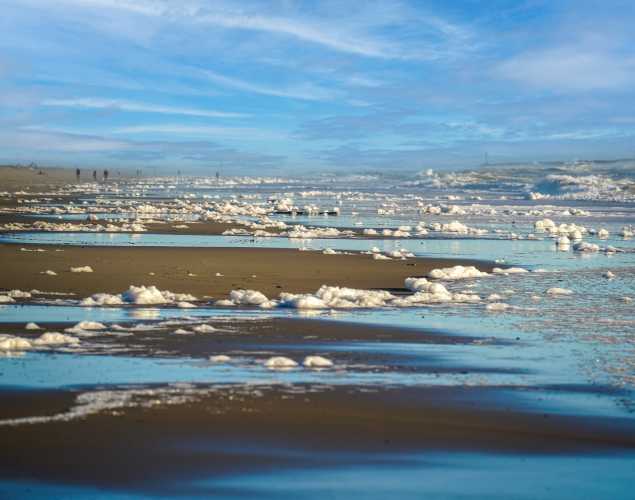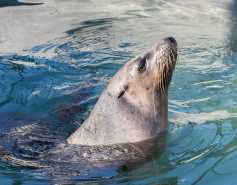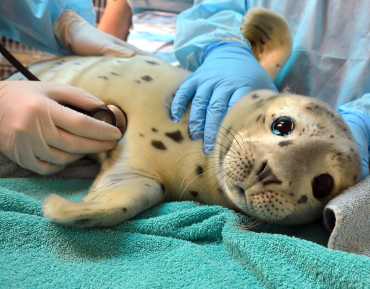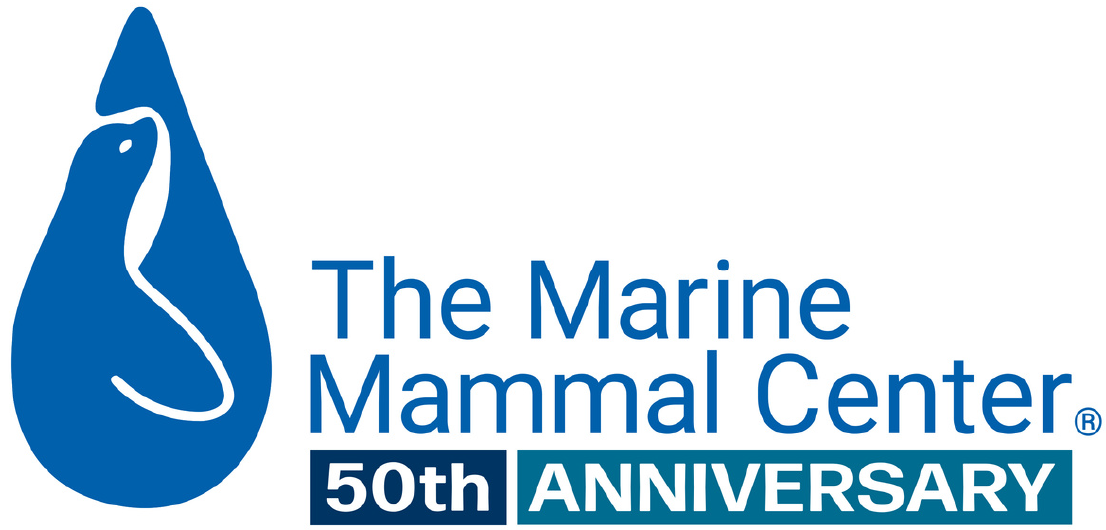
The New Lede: Algae bloom kills hundreds of sea lions off California
Published in The New Lede: October 17, 2024
Hundreds of sea lions off the coast of California have been poisoned this year amid a “highly unusual” algae bloom that has persisted in southern and central parts of the state into October.
Experts believe the blooms, which are becoming more common, may be linked to warming and changing ocean conditions. They harm sea life when algae produce a neurotoxic chemical that can be taken up by fish and crustaceans and absorbed by the larger animals that eat them.
Off the US west coast, the proliferations of algae, sometimes called “red tides”, usually peak in the late spring. For the last three years, however, harmful blooms have come on strong in the summer. This year, the bloom has persisted into autumn.
This year, the bloom has persisted into autumn.
That is “highly unusual,” according to Clarissa Anderson, a researcher with the Scripps Institution of Oceanography, who is also the director of the Southern California Coastal Ocean Observing System, which tracks harmful algal blooms. “It’s catching us all off guard,” Anderson said.
Last year also saw a deadly bloom take a toll on sea life in southern California — thousands of sea lions and dolphins died in that event, which was further south than this year’s bloom and did not persist as long as this year’s has.
Michelle Berman Kowalewski, founder and director of the Channel Islands Cetacean Research Unit, said the organization responded to 120 dead dolphins in a single month in the 2023 event, compared to 35 in an average year.
When mammals such as sea lions are poisoned by the neurotoxin domoic acid generated by the algae blooms, they can suffer seizures and brain damage. Affected animals can die in the open ocean or become stranded on beaches.
Learn More About Domoic Acid
{"image":"\/Animals\/Patients\/California sea lions\/2019\/cropped-images\/csl-pammysue-by-bill-hunnewell-c-the-marine-mammal-center-405-0-2354-1838-1603243352.jpg","alt":"California sea lion Pammysue","label":"Research Library","title":"Domoic Acid Toxicosis","link_url":"\/science-conservation\/research-library\/domoic-acid-toxicosis","type":"page"}

{"image":"\/Animals\/Patients\/California sea lions\/cropped-images\/csl-by-bill-hunnewell-c-the-marine-mammal-center-2-0-1031-1794-1401-1603916128.jpg","alt":"California sea lion","title":"Evaluating Sense of Smell in California Sea Lions and Relevance to Domoic Acid","link_url":"https:\/\/www.marinemammalcenter.org\/publications\/evaluating-sense-of-smell-in-california-sea-lions-and-relevance-to-domoic-acid","label":"Research Paper","type":"publication"}

Evaluating Sense of Smell in California Sea Lions and Relevance to Domoic Acid
Read More{"image":"\/Misc\/Graphics\/domoic-acid-attack.png","alt":"Domoic Acid Attack","title":"Domoic Acid Attack","link_url":"https:\/\/www.marinemammalcenter.org\/publications\/domoic-acid-attack","label":"Online Learning Resource","type":"publication"}

{"image":"\/Animals\/Wild\/California sea lion\/cropped-images\/sea-lion-pup-shutterstock-451-142-3018-2358-1603915228.jpg","alt":"California sea lion pup","title":"Domoic Acid in Fetal Fluids of California Sea Lions","link_url":"https:\/\/www.marinemammalcenter.org\/publications\/domoic-acid-in-fetal-fluids-of-california-sea-lions","label":"Research Paper","type":"publication"}

Yes, I want to save a life!

Yes, I want to save a life!
You’ll be giving sick and injured animals the best possible care at the Center’s state-of-the-art hospital. With your gift today, you are giving a patient a second chance at life in the wild.
See Our Latest News
{"image":"\/Animals\/Wild\/Sea otter\/so-wild-morro-bayphoto-c-brian-simuro-20.jpeg","alt":"Sea otter and pup","title":"Watch a Sea Otter Pup Reunite With Its Mother","link_url":"https:\/\/www.marinemammalcenter.org\/news\/watch-sea-otter-pup-reunite-with-its-mother","label":"News Update","date":"2025-11-14 10:35:41"}

{"image":"\/Animals\/Wild\/Sea otter\/sea-otter-photo-c-brian-simuro.jpeg","alt":"Sea otter","title":"AP News: Baby sea otter is reunited with mother in central California after dramatic rescue","link_url":"https:\/\/www.marinemammalcenter.org\/news\/ap-news-baby-sea-otter-is-reunited-with-mother-in-central-california-after-dramatic-rescue","label":"In the News","date":"2025-11-14 09:46:34"}

AP News: Baby sea otter is reunited with mother in central California after dramatic rescue
November 14, 2025
Read More{"image":"\/Animals\/Patients\/Harbor seals\/2013\/cropped-images\/hs-bogey-by-ingrid-overgard-c-the-marine-mammal-center-371-0-2712-2118-1607385758.jpg","alt":"harbor seal Bogey","title":"Top Holiday Gifts for Ocean Lovers","link_url":"https:\/\/www.marinemammalcenter.org\/news\/top-eco-friendly-holiday-gifts-that-give-back","label":"News Update","date":"2025-11-04 01:00:00"}

{"image":"\/Animals\/Wild\/Hawaiian monk seal\/cropped-images\/hms-wild-photo-1-c-noaa-pifsc-hmsrp-35-0-1270-992-1759760452.jpg","alt":"A Hawaiian monk seal rests on its side on a sandy beach.","title":"Where Do Hawaiian Monk Seals Live? And Other \u2018\u012alio Holo I Ka Uaua Trivia","link_url":"https:\/\/www.marinemammalcenter.org\/news\/where-do-hawaiian-monk-seals-live-and-other-ilio-holo-i-ka-uaua-trivia","label":"News Update","date":"2025-10-06 00:00:00"}

Where Do Hawaiian Monk Seals Live? And Other ‘Īlio Holo I Ka Uaua Trivia
October 6, 2025
Read More


